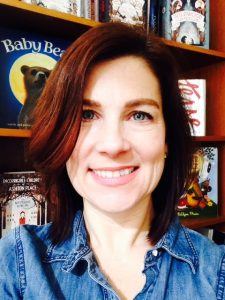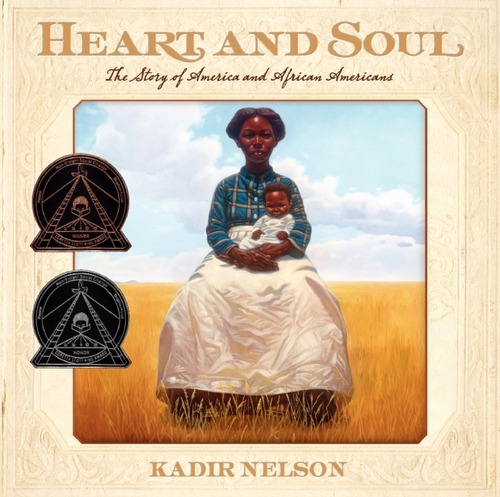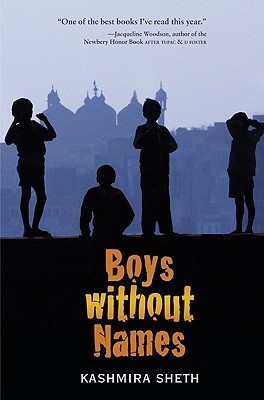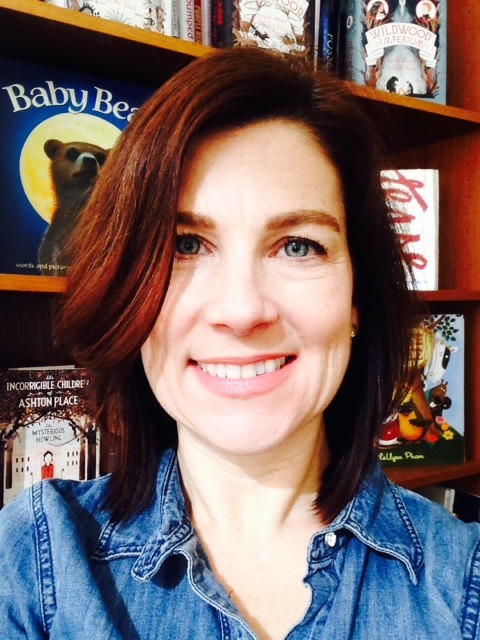CBC Diversity: Industry Q&A with Publisher Donna Bray

Interview by Caroline Sun
Please tell us about the most recent diverse book you published.
I have two answers for that, both examples of the different ways I would define “diversity”:

Heart and Soul: The Story of America and African Americans by Kadir Nelson, a fully-illustrated work of narrative nonfiction, tells the story of the African American experience through the lens of an “everywoman,” an elder whose own family history has spanned decades and intersected with defining moments in American history. It’s an extraordinary book which received a Coretta Scott King Medal and an Honor, for writing and illustration respectively. Kadir is an African American writer and artist, writing about his own heritage, which is probably the first way anyone might define a diverse book.

The Burning Sky by Sherry Thomas is a less obvious example. It is a teen fantasy, the first in a trilogy, set partly in 19th century England and partly in a magical world parallel to our own. What makes the book “diverse” for me is that Sherry is a Chinese immigrant who came to the States when she was thirteen years old.
While I actively look for stories in which the authentic experience of race, ethnicity, or religion is explored, I also think we need more diversity of authors, period, who just write great stories, whether or not they feature diverse characters. I would never want diverse authors to be pigeonholed.
What is one factor holding you back from publishing more diverse books OR what’s the biggest challenge for publishing companies who want to feature more diverse titles?
There are really two factors to my mind: sales and submissions.
I’ll speak to sales first. As other editors have explained so eloquently (the wonderful Rosemary Brosnan and Phoebe Yeh, to name two), it’s a huge challenge for a mainstream publisher to sell the extraordinary diverse books we publish. Often I read eloquent articles by booksellers, teachers, and librarians, bemoaning the lack of diverse books. And while I do agree that there ought to be more, I can’t help but look back with chagrin on the many beautiful, original, well-reviewed books I’ve published in this vein which have languished. Discoverability, an issue for so many books, seems to be that much more of a hurdle when it comes to diverse books.
I do think one of the problems is that some schools, libraries, and bookstores will only stock diverse titles if they have a population of that particular race or ethnicity – they might not think they need titles about Latinos or Arabs or African Americans if theirs is, say, a largely white or Asian clientele. This is quite frustrating for me as a publisher, and terribly limiting for those poor kids who are shut out from so many books that could open their eyes to a much wider range of experiences. Do we stop shelving historical fiction if none of our students have time-traveled from the 18th century? Or cut the budget for books set in Middle Earth if we don’t have a hobbit minority in the community? Why wouldn’t an African American child relate to an Indian protagonist, or a white child to a Korean narrator? The best books will explore the universality of the human condition beyond the specific profile of a character. It’s going to continue to be difficult to sell diverse books until this mindset changes.
The other challenge is submissions. Sadly, I simply do not get many submissions from writers of diverse backgrounds. There are probably many reasons for this – the publishing establishment (editors and agents) is largely white (and what might be called “elite” – upper-middle and upper-class; the lack of class and economic diversity is a whole other problem in this industry, but I digress…). Diverse writers may have less access or exposure to the publishing process. Several years ago, frustrated by the paucity of diverse submissions, I established a writing contest for diverse middle-grade novels. We received hundreds of submissions, and that first year we gave awards to two writers (a miracle!): Kashmira Sheth for Blue Jasmine, about an Indian immigrant, and Jackie Brown for Little Cricket, about a Hmong immigrant. Subsequent years, however, yielded nothing. And most of the submissions were not written by writers of diversity, unfortunately. Eventually I had to abandon the contest, as I had a small staff, it was a huge amount of work to read all the manuscripts, and all for very little result.
I was also involved in the imprint Jump at the Sun at Disney, where I published several titles about the African American experience. While we did have success with awards and acclaim, nonfiction biographies tended to be the bestsellers, and sold largely in the library market. I wish we could have had more mainstream trade or mass market breakout hits.
What I have always wanted is to publish a much wider titles in which the main characters are authentically African American, or Asian, or Mexican, in which racial or ethnic identity is just part of the story, not the whole story. On the Balzer + Bray list we publish Crystal Allen (How Lamar’s Bad Prank Won a Bubba-Sized Trophy; The Laura Line) – she writes very funny, heartfelt middle-grade books that happen to feature African American characters. She deserves a much wider audience. Go buy her books!
What is an example of a current bestselling diversity title?
On our list I would have to say Heart and Soul by Kadir Nelson. First and foremost, it is simply a brilliant and beautiful book that does what no other book for children has done. It received glowing reviews and awards. And of course, Kadir is a much-admired and respected master of his craft. In recent months especially we’ve seen an uptick in sales, which can likely be attributed to the Common Core State Standards. I know CCSS is controversial, but if it can contribute to stronger sales and a longer life for diverse books, then I’m delighted.

Another book that seems to have benefited from CCSS is Kashmira Sheth’s novel about child labor in India, Boys Without Names.
Who would you consider to be a diversity pioneer in children’s and/or young adult literature?
In my career, that person would be Lisa Holton. Jump at the Sun was entirely her brainchild. Watching her advocate for the imprint and its books and authors was a real education for me. She and founding editor Andrea Pinkney flew to Los Angeles to personally pitch The Cheetah Girls to the Disney Channel, and didn’t relent until the series was picked up. When she got resistance from accounts about African American titles not being right for a chain’s “demographic,” she pushed back. Lisa made JATS titles major leads on the list. And beyond JATS, she encouraged the acquisition of any kind of diverse book. She was a strong proponent of underrepresented minorities in children’s books, and considered inclusive literature a form of social justice. She had a lasting influence on me as an editor, as she has with so many others.
If you have an author who wants to write about characters outside of his/her own background, how do you generally handle that? Do you encourage your author to dive into research, or do you dissuade your author from venturing into what is unfamiliar to them?
This is tricky. I do think this has been done successfully: Patricia McCormick’s Sold is a great example. And in 2015 I’m publishing a book about a gay teen boy, written by Becky Albertalli, a straight woman, called Simon vs. The Homo Sapiens Agenda. So while I’m open to it, I’m also slightly wary. I think writing cross-culturally can of course be done by a writer of great talent and empathy, but it requires extra sensitivity.
Tell us about your editing process. When you edit cross-culturally, how do you ensure that the book gets a culture with which you might not be as familiar “right”?
As with my editing process on any book, I ask a lot of questions – and the less familiar a culture is to me, the more questions I’ll ask! And depending on the specificity of the subject matter and the degree of the author’s connection to the culture, I might even get outside “expert” readers for a manuscript.
If you could receive a manuscript about one culture or subculture that you don’t normally see, what would it be?
I can almost never say what I’m looking for in any category – my list is wide-ranging and a little eclectic, and I like to be surprised. But if I had to give a more helpful answer… I’d love to see more stories set in immigrant communities in this country. More Arab or Muslim stories would be welcome, as well as stories set in locations around the world that are in the news. I am fascinated by insular religious cultures and the perspective of the differently-abled. But really, I’m open – so surprise me!

Donna Bray is Co-Publisher of Balzer + Bray, an imprint of HarperCollins Children’s Books. She feels lucky to be able to work with many gifted authors and illustrators, including Kadir Nelson, Sherry Thomas, Sara Pennypacker, Amanda Maciel, Sam Garton, Maryrose Wood, Adam Rex, LeUyen Pham, Colin Meloy and Carson Ellis, to name just a few.


